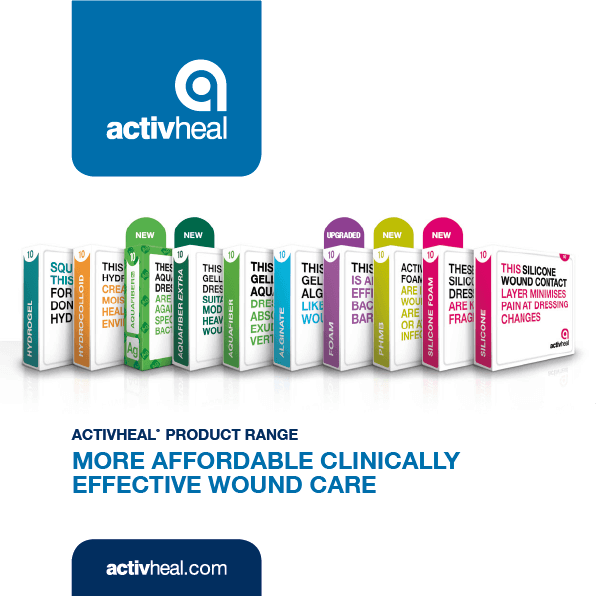Why Wounds Fail to Heal

WHY WOUNDS FAIL TO HEAL
There must be adequate supplies of nutrients and oxygen available in the body for cell metabolism and effective waste product removal for a wound to heal at the optimal rate.
There are several reasons why wounds fail to heal and these can be classified as intrinsic, (internal), and extrinsic (external). It is important that the patient is assessed holistically, as healing is a systemic process and factors affecting the patient will ultimately effect the healing of a wound.
INTRINSIC FACTORS
- Age
- Psychological
- Body build
- Lifestyle
- Nutritional status
- Medication
- Comorbidities (Peate & Glenrose, 2015; Driscoll, 2010)
Observable changes in wound healing in the elderly include increased time to heal and the fragile structure of healed wounds. Delays are speculated to be the result of a general slowing of metabolism and structural changes in the skin of elderly people.
Psychological
Studies have shown that high levels of emotional stress, negative thought processes and anxiety can impact wound healing. These stressors can impact the physiology and influence health outcomes. Mental health, such as recurrent self-harming may also contribute to wounds failing to heal.
Body Build
Body build can affect the delivery and availability of oxygen and nutrients at the wound site. Underweight individuals may lack the necessary energy and protein reserves to provide sufficient raw materials for proliferative wound healing. Bony prominences lack padding and become readily susceptible to pressure due to the reduced blood supply of wounds associated with bony prominences. Poor nutritional habits and reduced mobility of overweight individuals can lead to an increased risk of wound dehiscence, hernia formation and infection.
Lifestyle
Extrinsic factors such as smoking, alcohol and drug use all have an intrinsic effect on the physiology of wound healing and can delay the healing process.
Nutritional Status
Healing wounds, especially full-thickness wounds, require an adequate supply of nutrients. Wounds require calories from carbohydrate, fats and proteins, vitamins and minerals and an adequate fluid intake. Calories provide energy for all cellular activity and when in short supply in the diet, the body will utilise stored fat and protein.
Medication
Many medications have the capacity to affect wound healing such as steroids, anti-inflammatory drugs, chemotherapy drugs and immunosuppressants.
EXTRINSIC FACTORS
- Mechanical stress
- Debris
- Temperature
- Desiccation and maceration
- Infection
- Chemical stress
- Wound dressing
- Wound care skill/ technique (Peate & Glenrose, 2015; Driscoll, 2010)
Mechanical stress factors include pressure, shear and friction.
Debris
Debris, such as necrotic tissue or foreign material, must be removed from the wound site in order to allow the wound to progress from the inflammatory stage to the proliferative stage of healing.
Temperature
Temperature controls the rate of chemical and enzymatic processes occurring within the wound and the metabolism of cells and tissue engaged in the repair process.
Desiccation and Maceration
Desiccation (drying out) of the wound surface removes the physiological fluids that support wound healing activity. Maceration resulting from prolonged exposure to moisture may occur from incontinence, sweat accumulation or excess exudate. Maceration can lead to enlargement of the wound, increased susceptibility to mechanical forces and infection.
Infection
Infection at the wound site will ensure that the healing process remains in the inflammatory phase.
Chemical Stress
Chemical stress is often applied to the wound through the use of antiseptics and cleansing agents. Routine, prolonged use of iodine, peroxide, chlorhexidine, alcohol and acetic acid has been shown to damage cells and tissue involved in wound repair.
Wound dressing
The use of an inappropriate dressing that maintains an adverse wound healing environment, can cause trauma and result in delayed healing.
Wound care skill and technique
A common reason wounds fail to heal is down to the wound care technique of the healthcare professional. This refers to the potential use of an incorrect dressing, not following clean wound procedures (aseptic techniques), leaving a dressing in place for too long and trauma upon dressing removal.
The ActivHeal Academy covers multiple wound care topics including dressing selection and wound assessment. The Academy has over twenty hours of wound care education to support your Continuing Professional Development, including our Tissue Viability Society endorsed higher tier modules.
References:
- Peate I, Glencross W; Wound Care at a Glance, Wiley Blackwell 2015)
- Driscoll P (2010) Advanced Medical Technologies. Factors that affect Wound Healing. “Worldwide Wound Management, 2008-2017”, Report S247
Find out more about The ActivHeal Academy
SIGN UP TO OUR NEWSLETTER OR FOLLOW US ON SOCIAL MEDIA FOR THE LATEST UPDATES. Do you want to receive future updates from activheal® and find out how we can support you further?
#heretohelp

FIND OUT MORE ABOUT OUR FULL RANGE OF ADVANCED WOUND CARE PRODUCTS.

CONTACT US FOR MORE INFORMATION
Only applicable in the EU.
The ActivHeal website is only applicable for CE marked countries



